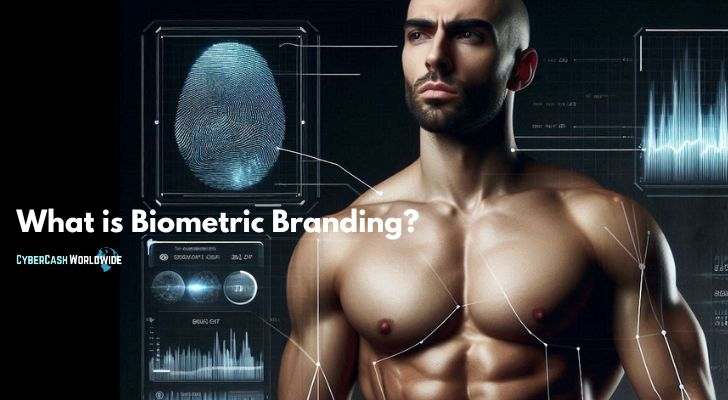Biometric branding is all about linking personal traits—like your fingerprint, face, or voice—to your personal identity or brand. While biometrics are usually thought of in terms of security, like unlocking your phone with your face or fingerprint, it’s also being used by companies in new and creative ways.
Essentially, it's about using your body as a unique identifier to personalize experiences and build a connection between you and a brand. Think about how, when you pick up your phone and it recognizes your face, it feels natural.

Now, take that same idea into the world of branding and marketing. Biometric branding aims to create a personalized experience for customers based on their physical traits, with a focus on making that experience more seamless and enjoyable. It’s not just about recognizing someone, it’s about building a relationship with them through personal data.
- When you go to a store, facial recognition might greet you and offer personalized discounts based on your shopping history.
- Online, your voice could trigger specific ads or product recommendations tailored to your preferences.
- Fitness brands could use heart rate data from wearable devices to offer real-time, personalized feedback on your workouts.
Biometrics and Marketing: The Future of Personalized Ads
When it comes to marketing, personalization is everything. You’ve probably noticed how ads follow you around the internet based on what you’ve searched for or bought in the past. Biometric branding takes that personalization to another level by taking physical traits into the equation. Instead of relying on cookies or your search history, companies could start using biometric data to target ads more precisely.
Imagine you’re shopping online, and the website uses facial recognition to not only confirm your identity but to analyze your reaction to the products you're looking at. Based on subtle facial cues, the site might show you items it thinks you’ll like more or change the layout to suit your preferences. Or, using voice recognition, an online shopping app might suggest products based on how your tone of voice changes as you browse, indicating your level of interest or mood.
This level of personalization has the potential to make advertising more effective by tailoring ads to you in real time. Companies are always trying to figure out how to get more clicks, more purchases, and ultimately, more revenue. Biometrics adds a whole new dimension to marketing by allowing brands to get even more specific with their targeting.
- Facial recognition could detect whether you seem happy or annoyed with a product, and then offer alternatives to match your mood.
- Voice assistants like Alexa or Siri could use your speech patterns to recommend products or services you’re likely to buy based on how you sound.
- Even things like your posture or stress levels could be analyzed to decide what kind of ads you see while browsing social media or shopping online.

Biometrics and Marketing
Making Money with Biometric Branding
Now let’s talk about where the money comes in. Brands are always looking for new ways to make money, and biometric branding offers a fresh way to increase profits. By using biometric data, companies can create hyper-personalized experiences that boost customer loyalty and sales. The more a brand knows about you, the better it can cater to your specific needs and preferences, which increases the chances of you buying from them.
For example, if a brand knows your exercise routine through biometric data from a smartwatch, they could send you customized product suggestions based on your fitness goals or current health stats. If your wearable device detects that you’ve had a particularly active day, you might get a notification offering you a discount on protein shakes or athletic gear. This kind of targeted marketing doesn’t just feel relevant—it feels like the brand knows you, which can lead to repeat purchases and long-term loyalty.
But it’s not just about increasing sales in the short term. Brands can also use biometric branding to gather long-term data on their customers, which can help them fine-tune their marketing strategies over time. By tracking biometric data, companies can see how customers respond to different types of ads, products, and experiences. This allows them to continually adjust their marketing efforts to maximize engagement and drive more sales.
- Fitness apps that track your progress could use that data to recommend products at exactly the right time, like after a long workout when you’re more likely to make a purchase.
- Retailers using facial recognition could tailor sales and discounts based on how frequently you shop and your typical spending habits.
- Biometric data from wearables could inform companies when to target you with ads for stress-relief products, like massage devices or relaxation apps, based on your heart rate or sleep patterns.

The Dark Side: Privacy Concerns and Biometric Data
While biometric branding opens up a lot of opportunities for making money and improving the customer experience, there’s a serious issue that needs to be addressed—privacy. Collecting and using biometric data isn’t as simple as tracking clicks or shopping habits. This is deeply personal information, and people are starting to question how comfortable they are with brands collecting and storing their biometric data.
Once your biometric data is out there, you can’t change it. If your fingerprint gets compromised, you can’t just get a new one like you would with a credit card. That’s why it’s so important for companies to handle this data carefully and responsibly. There’s also the question of who owns the data once it’s collected. Are companies sharing it with third parties? How long are they keeping it? These are all issues that brands need to think about as they move into the biometric branding space.
Customers are already skeptical of how much data companies collect through cookies and social media, so adding biometrics to the mix could raise even more concerns. Brands will need to strike a balance between personalization and privacy if they want to make biometric branding a viable long-term strategy.
- You might hesitate to use facial recognition in a store if you’re not sure how your data will be used afterward.
- There are already concerns about voice assistants recording conversations—adding biometrics to the mix could make people even more cautious.
- With new privacy regulations coming out, brands will need to make sure they’re complying with laws around how biometric data is collected, stored, and used.

How Biometric Branding Fits into Making Money Online
Biometric branding isn’t just for brick-and-mortar stores or fitness apps. It’s also making its way into online platforms, especially in e-commerce and social media. Online retailers are already using biometrics for things like secure logins and payments, but the next step is using this data to create personalized shopping experiences that boost sales.
For example, online marketplaces might use facial recognition to tailor product recommendations based on your expressions as you browse. If you look frustrated while searching for something, the site might adjust its recommendations to show you more relevant options. Social media platforms could use biometric data from wearable devices to display ads that match your emotional/physical state, making the ads more likely to catch your attention and result in a sale.
The more personalized your online shopping experience, the more likely you are to spend money. That’s why biometric branding is such a big deal for companies looking to make money online. By using biometric data to anticipate your needs and preferences, brands can deliver the right product or offer at exactly the right moment, increasing the chances that you’ll make a purchase.
- E-commerce sites using facial recognition could offer discounts when they notice you look particularly interested in a product.
- Wearable devices tracking your biometric data could lead to personalized emails with product recommendations based on your current fitness levels or health goals.
- Social media platforms could change the types of ads you see based on biometric data that suggests your stress levels or emotional state.
Wrapping It All Together
Biometric branding is about more than just recognizing your face or fingerprint. It’s about using those personal traits to build deeper connections between you and a brand, ultimately driving loyalty and sales. For businesses, this means new opportunities to personalize experiences and make more money, especially in online spaces. But there’s a fine line between creating personalized experiences and invading privacy, and companies will need to navigate these concerns carefully as they continue to explore the potential of biometric branding.
As biometrics become more integrated into marketing strategies, brands that figure out how to make these experiences feel personal without crossing privacy boundaries will likely be the ones that come out ahead. The question is, how much are you willing to share for a more personalized experience?
